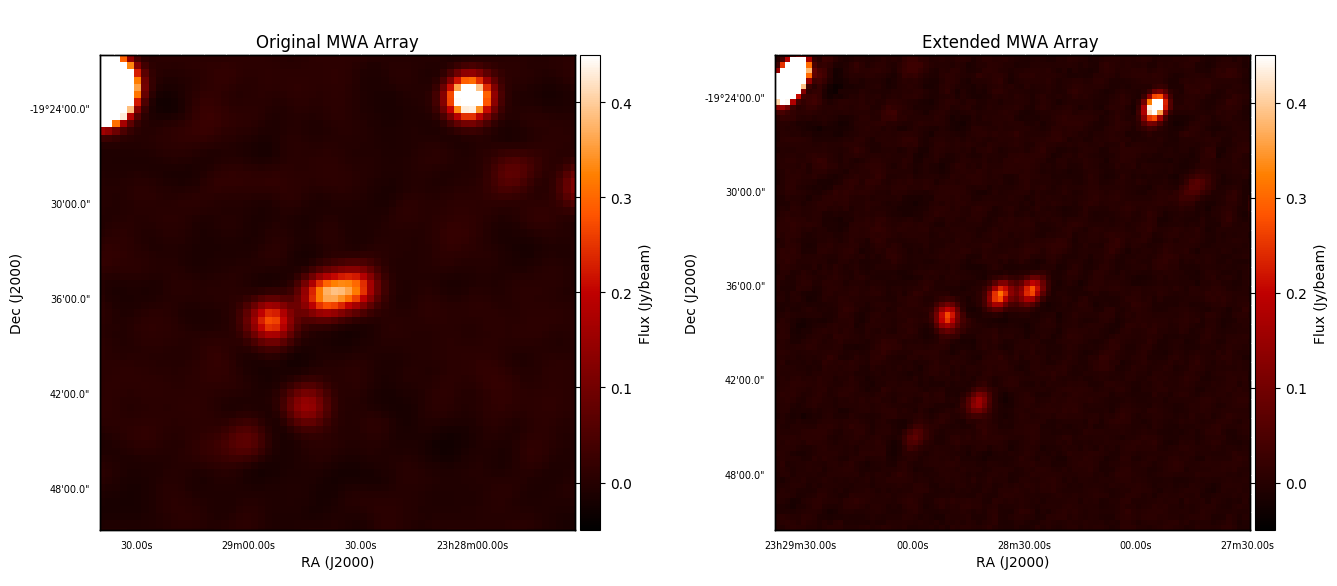May 2019’s Monthly Media is a comparison of Murchison Widefield Array (MWA) images from Dr Christene Lynch, before and after upgrades to the telescope. The MWA is a radio telescope located in outback Western Australia first constructed in 2012, and in 2017 was added to with more antennas and longer baselines, giving it a better view on the Universe.

Comparison of images that appeared to be of single point sources in the original MWA image (left) to what is now resolved into multiple sources in the new MWA image (right).
With this change comes a renewed need to understand the telescope and how it observes the sky. The telescope needs to be calibrated, meaning its observations need to be measured against a known quantity, in order to be able to accurately interpret its images. Calibrating the data from the MWA requires accurate models of the radio sky at the frequencies that it observes.
For the Epoch of Reionisation (EoR) experiment, accurate sky models for radio sources are especially crucial. The goal of this experiment is to detect the weak EoR signal from the early Universe, which is obscured by bright foreground signals from extragalactic sources and our own Milky Way Galaxy. Radio sky models provide a way to subtract the bright foreground emission and help to reveal the EoR signal.
To improve the sky models used by the EoR experiment to calibrate and subtract the foreground emission, Dr. Lynch is using the upgraded Phase II MWA to survey the region of the sky used by the MWA EoR experiment. The newly expanded MWA has radio antennas spread over a larger distance and now provides higher resolution imaging to compliment the original MWA imaging of the Southern radio sky. Using the expanded MWA, Dr. Lynch is now finding that some single sources, previously imaged by the MWA, are now resolved into multiple sources (pictured above).
Additionally, the higher resolution imaging reveals more complex structure in bright extended radio galaxies, such as Fornax A (pictured below).

Comparison of images of Fornax A from the original MWA (left) and the new extended MWA (right).
By combining both the original and new MWA images of these complex sources the best models can be created, allowing for the removal of their bright emission from the EoR data.
Leave A Comment